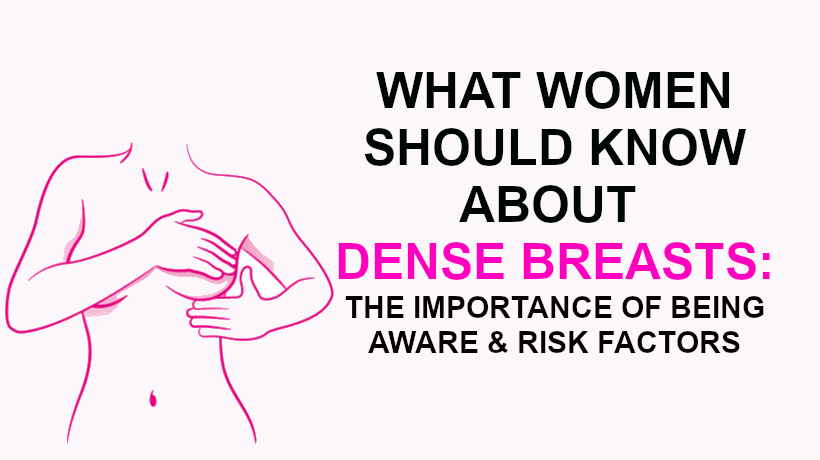A mammogram will show you how dense your breasts are. When you get the results of your mammogram, you may also be told if your breasts have low or high density. Women with dense breasts have a higher risk of getting breast cancer. Here is what you need to know about dense breasts:
What is Breast Density?
According to the CDC, breast density reflects the amount of fibrous and glandular tissue in a woman’s breasts compared with the amount of fatty tissue in the breasts, as seen on a mammogram. The breast density is then assigned to one of the following four categories:
- The breasts are almost entirely fatty (about 10% of women).
- A few areas of dense tissue are scattered through the breasts (about 40% of women).
- The breasts are evenly dense throughout (about 40% of women).
- The breasts are extremely dense (about 10% of women).
If you fall into the first two categories then you have low-density, non-dense, or fatty breasts. If you are in the second two categories, you may have dense breasts or high-density breasts.
Can I tell if I have dense breasts?
According to Cancer.org, Breast density is seen only on mammograms. Breast density isn’t based on how your breasts feel, and it’s not related to breast size or firmness.
“Your breast tissue may be called dense if you have a lot of fibrous or glandular tissue and not much fat in the breasts.” The CDC states that generally those with dense breasts:
- Are younger.
- Are pregnant or breastfeeding.
- Are taking hormone replacement therapy.
- Have a lower body weight.
Why is this important to know?
According to the CDC, “Women with dense breasts have a higher chance of getting breast cancer. The more dense your breasts are the higher your risk. Scientists don’t know for sure why this is true.”
It is also important for mammograms since dense tissue can hide cancers. This is because fibrous and glandular tissue looks white on a mammogram. So, does a possible tumor. Because it’s hard to tell the difference between a tumor and dense breast tissue on a mammogram, a small tumor may be missed and losing a chance of an early diagnosis.
What do I do if I have dense breasts?
If you have dense breasts you should talk to doctors about your personal risk of getting breast cancer. Different tests are available to help find cancers that are missed on a mammogram.
Your doctor may suggest one of these tests:
- Breast ultrasound. A machine that uses sound waves to make detailed pictures, called sonograms, of areas inside the breast.
- Magnetic resonance imaging (MRI). The MRI scan makes detailed pictures of areas inside the breast.



